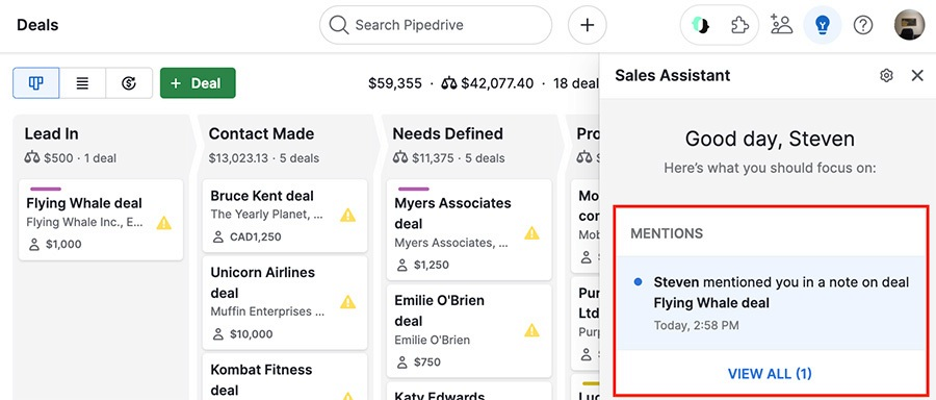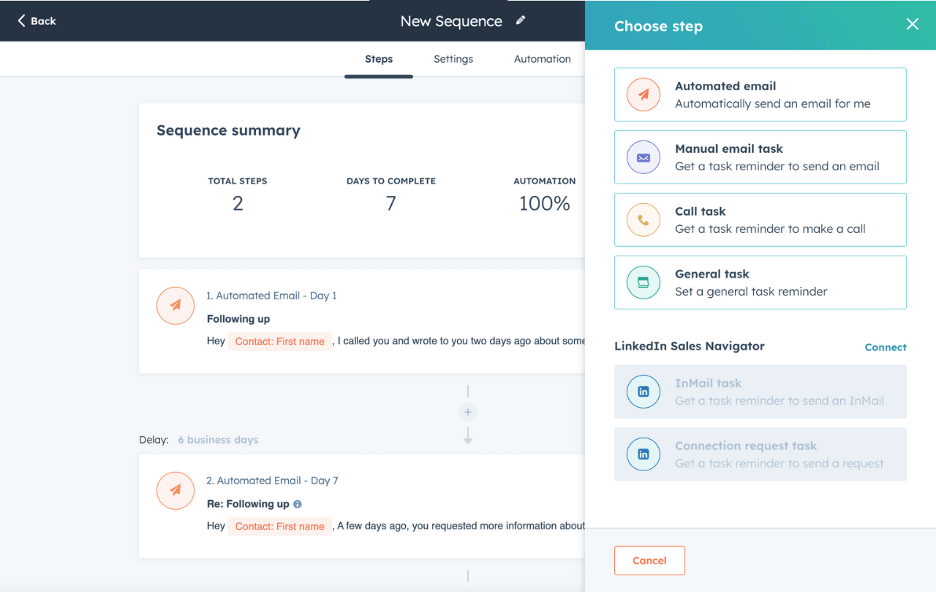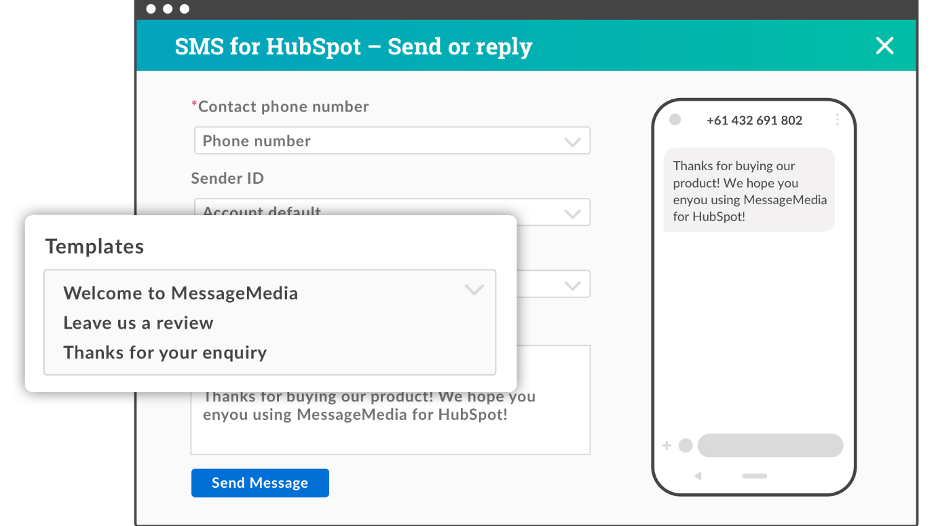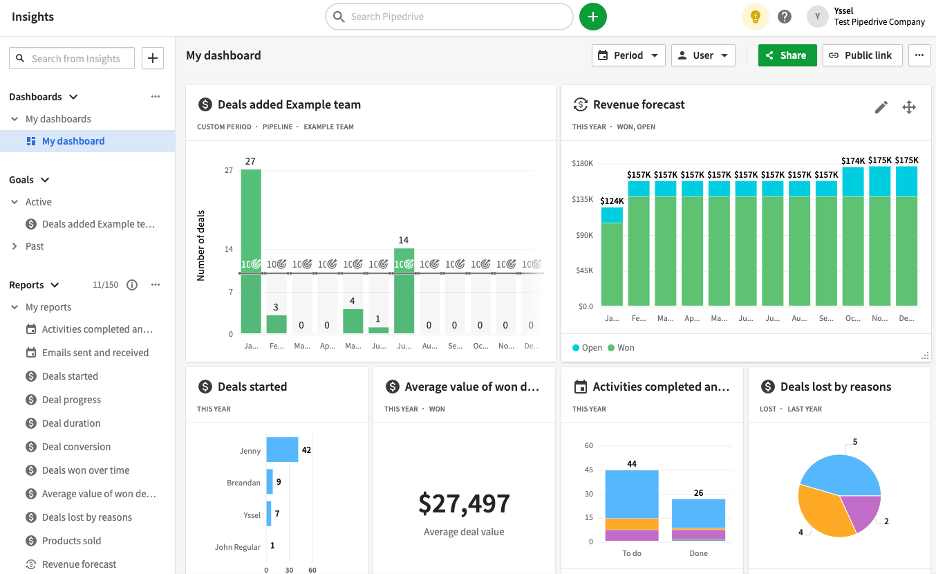MENU
Starting a Business
- Best Small Business Loans
- Best Business Internet Service
- Best Online Payroll Service
- Best Business Phone Systems
Our Top Picks
- OnPay Payroll Review
- ADP Payroll Review
- Ooma Office Review
- RingCentral Review
Our In-Depth Reviews
Finance
- Best Accounting Software
- Best Merchant Services Providers
- Best Credit Card Processors
- Best Mobile Credit Card Processors
Our Top Picks
- Clover Review
- Merchant One Review
- QuickBooks Online Review
- Xero Accounting Review
Our In-Depth Reviews
- Accounting
- Finances
- Financial Solutions
- Funding
Explore More
Human Resources
- Best Human Resources Outsourcing Services
- Best Time and Attendance Software
- Best PEO Services
- Best Business Employee Retirement Plans
Our Top Picks
- Bambee Review
- Rippling HR Software Review
- TriNet Review
- Gusto Payroll Review
Our In-Depth Reviews
- Employees
- HR Solutions
- Hiring
- Managing
Explore More
Marketing and Sales
- Best Text Message Marketing Services
- Best CRM Software
- Best Email Marketing Services
- Best Website Builders
Our Top Picks
- Textedly Review
- Salesforce Review
- EZ Texting Review
- Textline Review
Our In-Depth Reviews
Technology
- Best GPS Fleet Management Software
- Best POS Systems
- Best Employee Monitoring Software
- Best Document Management Software
Our Top Picks
- Verizon Connect Fleet GPS Review
- Zoom Review
- Samsara Review
- Zoho CRM Review
Our In-Depth Reviews
Business Basics
- 4 Simple Steps to Valuing Your Small Business
- How to Write a Business Growth Plan
- 12 Business Skills You Need to Master
- How to Start a One-Person Business
Our Top Picks
Pipedrive vs. HubSpot Comparison

Table of Contents
Small businesses need user-friendly, capable customer relationship management (CRM) systems to help manage customer relationships, nurture leads and improve sales. Pipedrive and HubSpot are popular CRM solutions with a range of features that can help streamline operations. We’ll compare their essential marketing, lead nurturing, communication and reporting features and more to help your business find the right CRM software for your needs.

Pipedrive vs. HubSpot Highlights
Pipedrive and HubSpot are two of the best CRM software solutions around. Here’s an overview of their pricing and offerings.
Criteria | Pipedrive | HubSpot |
|---|---|---|
Starting prices | $14.90 (per user per month, billed annually) | $30 (per month for two users; a free plan is also available) |
Free trial for paid plans | Yes (14 days) | Yes (14 days) |
Marketing campaigns |
|
|
Lead nurturing |
|
|
Omnichannel communications |
|
|
Reporting and analytics |
|
|
Integrations and API |
|
|
Who Is Pipedrive For?
Pipedrive is a sales-focused CRM. In fact, the company says it’s a CRM “designed by salespeople for salespeople.” It’s an excellent option for businesses that want to automate sales processes. Sales teams will appreciate Pipedrive’s comprehensive insights, customizable dashboards, deal reports, goal tracking and sales forecasting tools. Marketing teams can use the platform to generate leads. The pricing is competitive; you can add extra functionality to the platform via the 400-plus integrations. To learn more about Pipedrive, read our in-depth Pipedrive review.
Who Is HubSpot For?
HubSpot is a well-rounded CRM with features for sales, marketing and customer service teams. It’s a great choice for businesses that want to optimize sales and marketing outcomes. HubSpot has a great deal of built-in functionality. It’s also easy to customize the platform with time-saving workflow automations for sales funnel management, lead nurturing, after-sales support and more. HubSpot has a free tier and a low-price Starter plan. However, some of its most valuable features reside in higher-priced plans. You can add myriad extra features to HubSpot via 2,000 plug-ins from Pipedrive’s massive app store. Check out our detailed HubSpot CRM review for more information on the platform.
CRM software helps businesses by automating data entry, generating valuable insights, boosting productivity and centralizing data management.
Pipedrive vs. HubSpot Comparison
Here’s how HubSpot and Pipedrive compare in essential CRM features and pricing.
Running Marketing Campaigns
HubSpot and Pipedrive have built-in marketing platforms that help you connect with and successfully convert leads.
Pipedrive Marketing Campaign Features
- Integrated email marketing: Pipedrive lets you send and receive standard emails and launch email marketing campaigns. We like its intuitive drag-and-drop editor and broad selection of email templates. You can save templates and share them with co-workers.
- Omnichannel marketing: We like that Pipedrive helps you win customers over the phone and use SMS for marketing campaigns.
- Lead-generation tools: We also like Pipedrive’s lead generation tool, LeadBooster ($39 monthly). It captures contact information from online forms and chatbots on your website. You also get 10 inclusive target contact details from a database of over 400 million business-to-business (B2B) decision-makers. There’s an additional fee for extra contact data purchases.
- Marketing analytics: Pipedrive makes it easy to measure campaign engagement and conversion rates. You’ll get helpful insights on how to improve campaign performance.
According to Wpromote’s State of B2B Digital Marketing report, email and social media marketing are the most effective B2B marketing tactics for top-of-funnel and bottom-of-funnel campaigns. Ensure your CRM can run both campaign types.
HubSpot Marketing Campaign Features
- Integrated email marketing: We like how easy HubSpot makes it to create, personalize and optimize email campaigns. Professional-tier subscribers also get A/B testing and dynamic personalization features.
- Omnichannel marketing: HubSpot’s comprehensive campaign management tools impressed us. You can run SMS, telemarketing, content marketing, social media and paid search campaigns (like Google Ads). We really like that HubSpot’s analytics tools can help boost your SEO strategy.
- Dynamic lists: We like that HubSpot’s active lists help you define the actions (and inactions) that make a lead hotter or colder. HubSpot can add and remove individuals from your list in real time, depending on their actions.
- Customer segmentation: We were pleased to see market segmentation tools in HubSpot. You can group prospects and customers by specific characteristics — including certain demographics, psychographics and past interactions — for more targeted and effective marketing campaigns.
Winner
HubSpot wins this round. It offers more options and provides deeper insight into campaign data. The platform’s A/B testing, dynamic personalization and segmentation functions are excellent. The unique and helpful dynamic list feature also impressed us. Still, Pipedrive’s marketing platform is very good — better than those of most CRMs we’ve tested.
Pipedrive sells B2B decision-maker data, but the cost per contact is high compared with those of the best list broker services. However, Pipedrive lets you choose the number of records to buy; list brokers often require you to buy thousands.
Lead Nurturing
Here’s how Pipedrive and HubSpot compare for lead nurturing.
Pipedrive Lead Nurturing Features
- Sales automations: We appreciated Pipedrive’s sales automation features. You can establish multiple funnels for each product and service, and set unique triggers to help deals progress.
- Sales Assistant: Pipedrive’s Sales Assistant impressed us. It provides performance advice to reps at all stages of the sales process, tips on prioritizing deals, and suggestions on time-saving workflow automations.
- Smart contact data: We like that Pipedrive enriches prospect contact data by matching it to social media profiles and company details, thus helping reps create customized, confident sales pitches and presentations.
- Lead scoring: We were pleased to see lead-scoring features. The platform assigns quality scores to leads based on their profile, how they engage with emails, how often they visit your site, company size, location, line of business and more.

Pipedrive’s Sales Assistant feature helps reps manage their days, pipelines and workflows. Source: Pipedrive
HubSpot Lead Nurturing Features
- Sales automations: We like that reps and managers get 36 pre-built, customizable workflow automations. You can build new automations, amend existing automations and share automations with colleagues.
- Predictive lead scoring: Get live estimates on a lead’s chances of turning into a client based on their interactions. You can set specific criteria to signal lead strength.
- Document sharing: We like that you can create, share and track documents. You can use HubSpot’s templates and smart content to build new documents.

HubSpot makes it easy to create and set up custom sales automations. Source: HubSpot
Winner
Pipedrive’s excellent lead nurturing tools give it the edge over HubSpot in this category. These tools are ideal for B2B sales teams that deal with multiple decision-makers, constant changes and multiple stages. However, HubSpot’s lead nurturing tools are sufficient for more straightforward sales.
If your leads aren’t turning into sales, evaluate whether they’re actually ready to buy, ensure you’re following up properly, and examine your sales pitches for effectiveness.
Omnichannel Communications
HubSpot and Pipedrive incorporate omnichannel, one-on-one communication very well.
Pipedrive Omnichannel Communications
- Integrated email platform: We like that Pipedrive retains customer email interactions in a conversation history for easy reference.
- Omnichannel capabilities: With a third-party plug-in, you can retain and reference conversations with customers via SMS, MMS, web chat, social media private messaging and messaging apps (like WhatsApp).
- Voice calling: Apps such as Aircall, JustCall and Ringover enable phone sales and follow-ups. You can also use the Fireflies.ai and Tactiq apps to transcribe calls and save them to a customer’s file.
HubSpot Omnichannel Communications
- Integrated email and chat: We were pleased that you can conduct email and web chat conversations via the HubSpot platform and retain full access to each client’s conversation history.
- Social media, SMS and private messaging: Sales teams can talk to customers via a WhatsApp business account and hold conversations via SMS. All conversations are stored in the client’s history with the relevant HubSpot plug-ins.
- Telephone and messaging integration: We like that HubSpot has integrated VoIP; you can also choose your own provider, such as Aircall, RingCentral or Kixie.

HubSpot makes it easy for sales and marketing teams to send text messages via the platform. Source: HubSpot
Winner
HubSpot’s built-in email and VoIP functionality win this category. Additionally, HubSpot’s expansive range of apps allows you to communicate with clients on more channels.
Reporting and Analytics
CRM reports and data insights are invaluable for small businesses. Here’s how Pipedrive and Hubspot compare.
Pipedrive Reporting and Analytics Features
- Deal reports: We like that Pipedrive’s deal reports let you monitor the progress of individual deals as well as overall sales pipeline performance. Managers and reps can see which deals are closest to completion. Twenty-five configurable dashboard widgets display real-time performance data.
- Goal tracking: Pipedrive’s goal-tracking features impressed us. You can set up and track company, team and individual goals. Managers can analyze performance at every deal stage and identify training opportunities for underperformers.
- Sales forecasting: Pipedrive’s excellent sales-forecasting tool helps businesses understand which deals to focus on first.

Add up to 25 widgets to your Pipedrive dashboard to stay abreast of the latest information. Source: Pipedrive
HubSpot Reporting and Analytics Features
- AI-driven analytics: HubSpot’s superbly integrated AI impressed us. It gives managers and teams valuable insight into engagement, conversions and performance.
- Shared sales and marketing dashboards: Get a clear view of performance at each stage of the customer journey to see what needs improvement.
- Attribution reporting: We liked HubSpot’s attribution reporting, which links revenue to specific campaigns and helps companies decide how to spend their ad budget.
Winner
HubSpot wins this category because of its AI-driven analytics, attribution reporting and customer segmentation capabilities. However, Pipedrive’s dashboard customization, deal reports and goal-tracking features are also very helpful.
AI features are becoming more important in CRM adoption decisions as businesses grow to appreciate the detailed insights these tools provide.
Integrations
Expand the effectiveness of Pipedrive and HubSpot with third-party integrations and APIs.
Pipedrive Integrations
- Growing app marketplace: Pipedrive’s marketplace has 400 apps that help you add new features and connect to software such as Zoom, Calendly and Microsoft Teams.
- Sales-specific apps: We like Pipedrive’s sales-specific apps, including ActiveDEMAND (sales call automation), Salespanel (advanced customer journey tracking) and WeMapSales (territory sales management).
- API platform: Create custom integrations and automations that are specific to your business with pre-built webhooks and a dedicated API platform.
HubSpot Integrations
- Massive marketplace: We were impressed that HubSpot has over 1,000 apps in its marketplace. Apps are logically ordered and easy to find.
- Sales and marketing apps: Streamline your sales and marketing processes by integrating with social media accounts and apps such as WordPress, Canva, Shopify, LinkedIn Sales Navigator and Dedupely (for removing duplicates from databases).
- Data-sync apps: Built by HubSpot, these apps create a two-way data sync between HubSpot and popular apps such as Google Contacts, Stripe, Airtable and accounting software.
- API interface: HubSpot provides an extensive API section for managing contacts, automating campaigns and workflows, tracking web analytics, syncing data and more.
Only Salesforce CRM has more app integrations than HubSpot. Read our detailed Salesforce CRM review to learn about this platform’s extensive integrations.
Winner
HubSpot is the clear winner for integrations, thanks to its 1,000 apps, data sync plug-ins and an easy-to-navigate app store. However, Pipedrive is catching up; it has over 400 apps, impressive pre-built webhooks and an API developer platform.
Pricing
HubSpot and Pipedrive offer various service levels. Impressively, HubSpot has a free service for new users.
Pipedrive Pricing
Pricing reflects annually billed costs. If you want to pay monthly, you’ll pay up to 32 percent more.
Plan | Price | Features |
|---|---|---|
Essential | $14.90 per user per month (billed annually) |
|
Advanced | $27.90 per user per month (billed annually) | Includes everything in the Essential plan, plus the following:
|
Professional | $49.90 per user per month (billed annually) | Includes everything in the Advanced plan, plus the following:
|
Power | $64.90 per user per month (billed annually) | Includes everything in the Professional plan, plus the following:
|
Enterprise | $99 per user per month (billed annually) | Includes everything in the Power plan, plus the following:
|
Pipedrive plans cost $14.90 to $99 per user per month. The Professional level ($49.90) delivers the best value with essential sales team features. Higher-level plans offer more flexibility and may suit companies with complex sales processes.
Note that some add-on services will incur additional costs. We were disappointed that Pipedrive doesn’t offer a free subscription, but you can take advantage of a 14-day free trial.
HubSpot Pricing
We were impressed that HubSpot offers a free service plan with marketing, sales, service, CMS and operations tools. Its paid plans are listed below. Note that the prices reflect monthly charges with an annual commitment. Month-to-month pricing is up to 40 percent more.
Plan | Price | Features |
|---|---|---|
Starter | $30 monthly for two users; $25 for each additional user |
|
Professional | $1,600 for five users; $100 for each additional user; one-time $3,000 onboarding fee | Includes everything in the Starter tier, plus the following:
|
Enterprise | From $5,000 monthly for 10 users | Includes everything in the Professional package, plus 10,000 marketing contacts and additional tools |
HubSpot’s free tier is a rarity in the market and comes with a respectable feature set. The Starter package is also a good value, with features such as email retargeting and sales automation. The Professional level brings a significant cost leap and a one-time $3,000 onboarding fee. You also may need to pay for extra users, API calls and additional charges.
If you want to compare CRMs with free tiers, check out our review of monday CRM; monday is the only other leading CRM provider that currently offers a free service level.
Winner
HubSpot’s platform is more comprehensive; its Starter tier will give many companies the tools they need. However, Pipedrive is also competitively priced, particularly if your company is considering HubSpot’s higher-level tiers.
While HubSpot gives you more features for the money, it’s not suited to all companies. For example, Pipedrive is a better value for businesses with complex B2B sales processes.
Pipedrive vs. HubSpot Summary
Pipedrive and HubSpot have unique target audiences. We recommend both platforms for companies with the following specific needs:
Pipedrive is best for companies that want to automate their sales processes.
Pipedrive provides central organization for complex sales processes with multiple decision-makers and other challenging factors. It stores and retains information on all prospects and walks reps through each sales process stage. We like that you can buy decision-maker information ad hoc in small volumes, and the platform’s marketing functionality impressed us.
HubSpot is best for businesses that want to optimize sales and marketing outcomes.
HubSpot is ideal for companies that have more straightforward sales cycles and want their sales and marketing teams to work together. The company’s after-sales support impressed us, making it an excellent choice if your business conducts many post-purchase follow-ups. The free and Starter plans have good functionality. However, the platform’s Professional level shines with omnichannel communications, automation and segmentation tools.
FAQs
What is the difference between HubSpot and Pipedrive?
Focus is the primary difference between HubSpot and Pipedrive. HubSpot’s extensive marketing tools are excellent and will support sales, marketing and customer care teams for most products and services. Pipedrive also offers great marketing tools, but it shines because of its excellent support for salespeople with complex products.
Is Pipedrive a good CRM?
Pipedrive is a very effective CRM for companies with sales teams that sell complex, customizable and often expensive products and services, particularly B2B companies. The interface is easy to use, and the workflows are highly customizable to individual sales funnels.
Is there a better CRM than HubSpot?
HubSpot is a market-leading CRM, but it might not be the right fit for your company. For example, Salesforce and Oracle NetSuite provide more enterprise-level capabilities for large, complex businesses. HubSpot is easy to use, but Freshworks and Zoho, although not as full-featured as HubSpot, may be more user-friendly. Choosing the right CRM for your business is difficult; your decision should be guided by price, ease of use and the ability to be customized to your company’s specific needs and priorities.


